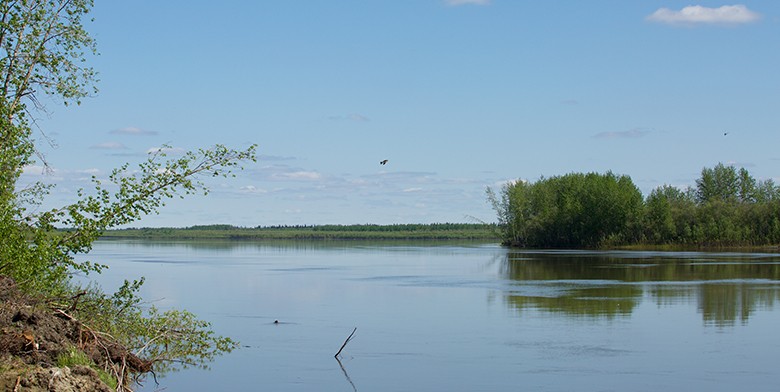ANTHC engineering team completes Galena flood recovery projects
December 18, 2015Categories: Healthy Homes and Communities

Two and a half years after Galena was stuck by catastrophic spring floods, the community is returning to normal with nearly all of the public facilities restored and rebuilt. ANTHC environmental health and engineering staff were a large part of the recovery effort and hope to share their lessons learned with other villages and Tribes before disaster strikes. When Galena was hit with the flood in spring 2013, it affected every aspect of life for residents of the Yukon River community. Hundreds of residents were evacuated. More than 130 homes were damaged, the community clinic was flooded and most village infrastructure — fuel storage, power plant, water and sewer — was severely damaged beyond use. When Galena residents were secure from the initial flood damage, the real work began. The necessary community recovery and rebuilding was so extensive, officials with the Federal Emergency Management Agency (FEMA) compared the response efforts in Galena to the complexity of the recovery from Hurricane Katrina. Two weeks after the flood in 2013, ANTHC environmental health and engineering staff were onsite in Galena with the goal to restore water and sewer service for the community. But for the ANTHC staff, it became apparent that the recovery effort would extend beyond their typical scope of work. “When you think of all the things that make up a community — roads, schools, clinics — they were all gone in Galena,” said ANTHC Project Manager Mike Roberts. “ANTHC took on project management of things that we had never done, but knew were necessary to make Galena whole again. We helped do things like order police vehicles and rebuild a baseball field, which I never thought my team would be doing.” ANTHC was selected by the City of Galena to manage the complex task of administrating the emergency recovery. This involved working with many state and federal agencies, regional and local representatives, and multiple funding agencies. While the work was new, ANTHC has experience working with many partners and project management, so was able to cut down a typical recovery period of 5 to 7 years to two and a half when the last barge of flood debris left Galena this fall. Since the project in Galena started, ANTHC has been able to use this experience to help other response efforts in villages across the state, such as flooding in Kotlik and a community fire in Alatna. If your community is interested in emergency response planning, contact ANTHC.
